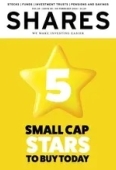How the WPP tortoise beat the S4 Capital hare

When Martin Sorrell completed his acrimonious exit in 2018 from the business he had built up over decades he had a point to prove.
His S4 Capital (SFOR) vehicle was supposed to leave his former charge in the shade by adopting a similar buy-and-build model to that employed at WPP (WPP).
The latter started life as wire shopping-basket manufacturer Wire and Plastic Products before Sorrell and co-founder Preston Rabl acquired it in the mid-1980s as a listed entity through which to build a global advertising giant.
The idea was S4 would be a clean digital-led marketing business without the legacy analogue bits which remained in the WPP group.
Sorrell’s name, and some swiftly-executed acquisitions, initially created a real buzz and at its peak in 2021 S4 had a market valuation almost two thirds that of WPP.
A big retrenchment in advertising spend has subsequently taken the air out of its balloon and the shares are down 95% from their highs.
Revenue has reversed sharply; the company is scrambling to cut costs and Peel Hunt says it expects ‘little clarity on the outlook’ for 2025 ‘as visibility on client budgets will likely be low’.
On the face of it, the story is only marginally happier at WPP. Under Sorrell’s successor, Mark Read, the shares have continued to slide against a difficult backdrop. However, it is a more established, more diversified business which has seen its way through several economic cycles, and the unshowy Read provided some evidence at the company’s latest capital markets day (31 January) that the business might have some life to it.
While S4 was making a splash with a series of acquisitions, WPP has made significant progress in simplifying an operation which had a lot of individual moving parts.
While the growth targets outlined at the investor event are steady rather than stratospheric – with 3%-plus organic revenue growth being projected – if they can be delivered alongside stronger margin performance and improved cash flow they could help lift a valuation which, at a little more than eight times forecast earnings, feels pretty bombed out.
Read was clear-eyed on the impact of AI (artificial intelligence). This author would be minded to agree with him that machines aren’t suddenly going to replace the creative elements of advertising. Instead, they can help increase efficiency in areas like buying media space for ads.
What is striking is that AI is not a new thing for WPP. It has played a role for almost 10 years, with its adoption accelerated by the acquisition Satalia in 2021. This business builds and applies AI technology to solve efficiency problems for clients such as supermarket giant Tesco (TSCO) and Big Four accounting firm PwC.
Shore Capital says the company’s use of AI is ‘the next chapter in its digital and technology adoption story, rather than a radical reboot – providing comfort around the likelihood of successful execution’.
‘We also regard the group’s ongoing commitment to self-help initiatives, investing in technology and building partnerships with key industry players, as key to cementing its position as a leading global player and its ability to add value to a diversified blue-chip client base,’ add the analysts.
Important information:
These articles are provided by Shares magazine which is published by AJ Bell Media, a part of AJ Bell. Shares is not written by AJ Bell.
Shares is provided for your general information and use and is not a personal recommendation to invest. It is not intended to be relied upon by you in making or not making any investment decisions. The investments referred to in these articles will not be suitable for all investors. If in doubt please seek appropriate independent financial advice.
Investors acting on the information in these articles do so at their own risk and AJ Bell Media and its staff do not accept liability for losses suffered by investors as a result of their investment decisions.
Issue contents
Editor's View
Exchange-Traded Funds
Feature
Great Ideas
News
- Blow-out US jobs report sends stocks higher despite implications for rates
- Tesla shares slide in 2024 as investors mull their next moves
- Elementis shares soar after receiving a preliminary bid from US fund
- Ferrari gets into top gear to buck softer luxury goods trend
- Meta Platform’s dividend call stuns the market
- Can British Gas owner Centrica continue to deliver?

 magazine
magazine








